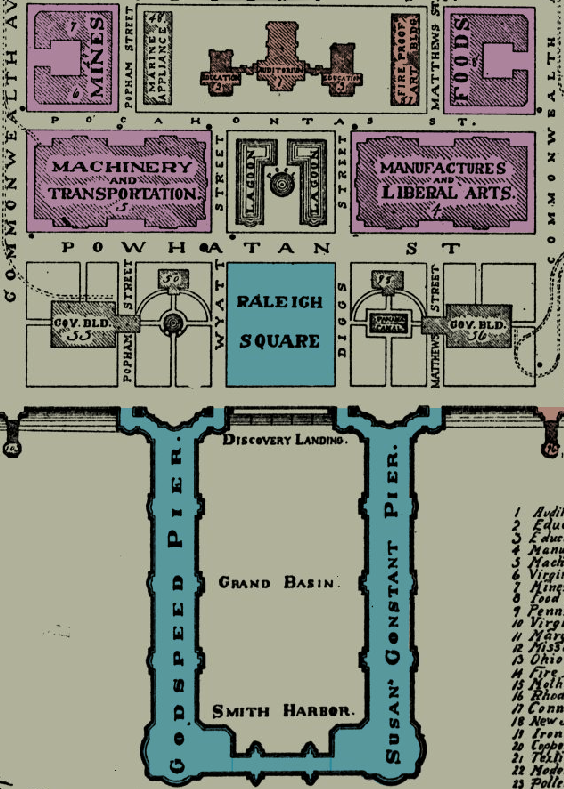The year 1907 marked the 300th anniversary of the founding of the settlement at Jamestown and a grand exhibition was hosted in Norfolk to mark the occasion. Globe-trotting journalist Edward Hungerford was one of those in attendance and The Mariners’ Museum Library has recently digitized some of his works in our possession about the event.
The Jamestown Ter-Centennial Exposition ran from April 26 – November 30, 1907. This impressive model city was built at Norfolk’s Pine Beach with the idea to capitalize on the craze in American popular culture at the time for pageantry and have something like a World’s Fair for Hampton Roads. Today Pine Beach is part of Norfolk Naval Base and some of the grounds have since given way to a golf course and other functions for the base. However some original buildings still remain having been re-purposed into the officers’ club and admiral’s quarters.
In the image below two negatives have been used to create a composite panorama of the Exposition’s main square.

Based on the Hampton Roads Naval Museum’s outstanding online exhibit about the Exposition we can determine Hungerford’s location when making the shots above. Referencing a map of the grounds, a detail of which is excerpted below, Hungerford was probably standing on the steps of the auditorium near the middle of Pocahontas Street. The structure with columns and flags on the right is the Palace of Transportation and Machinery. Beyond this, in the middle of the panorama, is the Government Building. The left half of the image shows the lagoon and Raleigh Square with the pier in the distance.
The pier, jutting out into the water from Sewell’s Point, looks quite lovely on a sunny day.
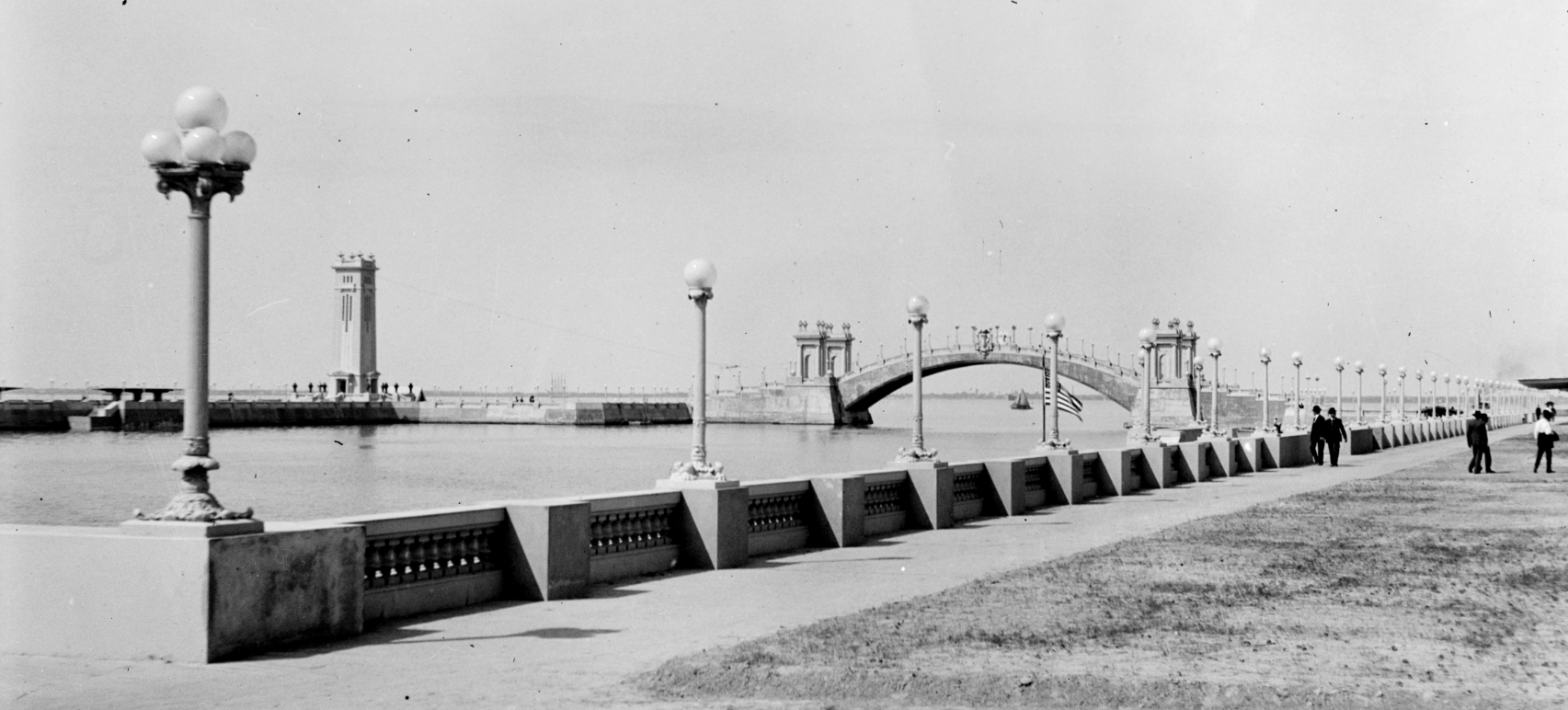
At the time Pine Beach was a rather remote destination. Parke Rouse of the Daily Press writes, “Two ferry-boat lines crossed Hampton Roads – one ran between Newport News’ Boat Harbor and Pine Beach and the other ran between Old Point and Sewell’s Point.”
Other tourists came on the train from downtown Norfolk, providing Hungerford with the opportunity to frame Exposition buildings with one of his favorite subjects: railroad tracks.
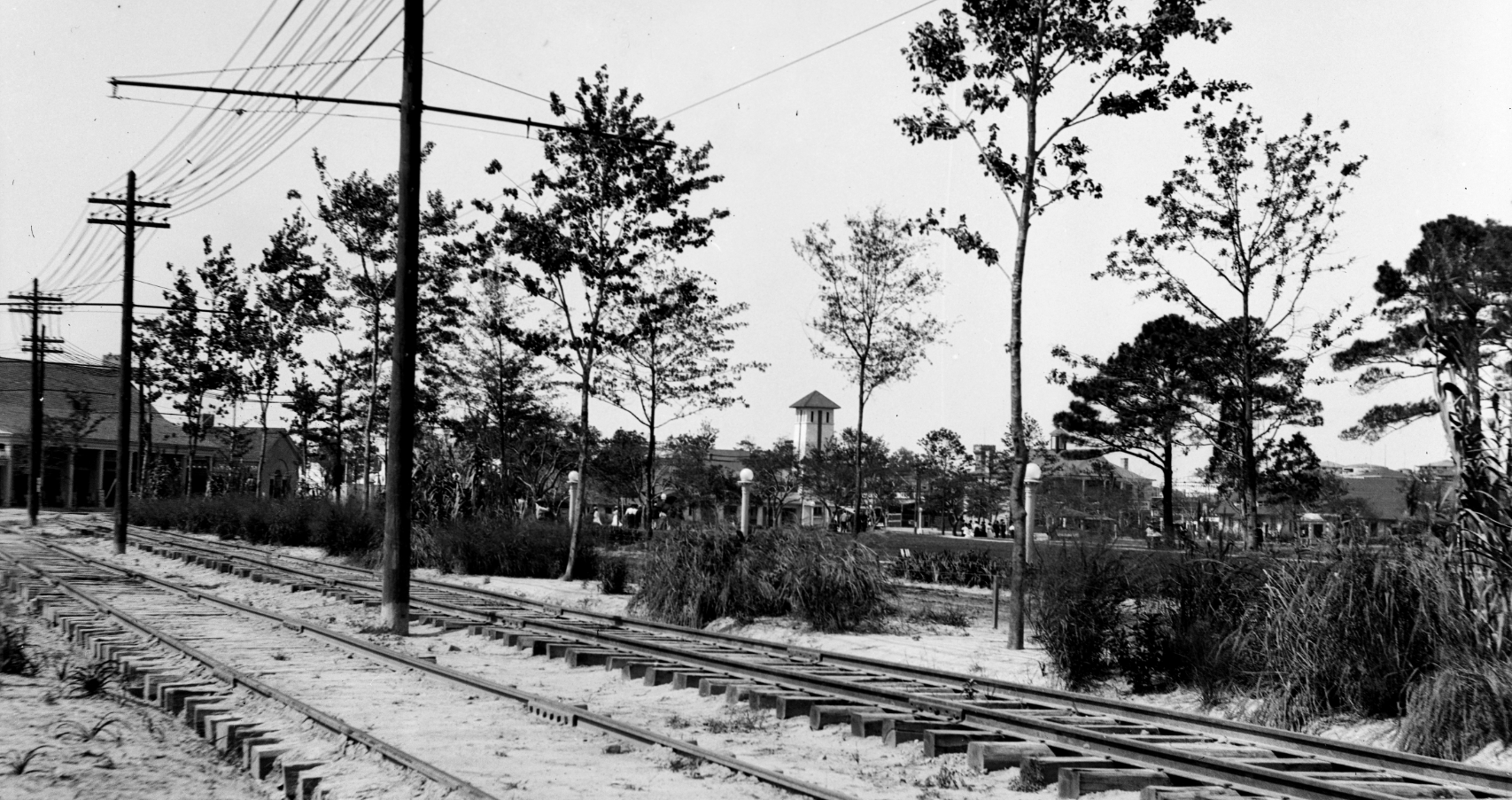
Some of Hungerford’s photos reveal the unfinished state of the Exposition at the time of its opening.
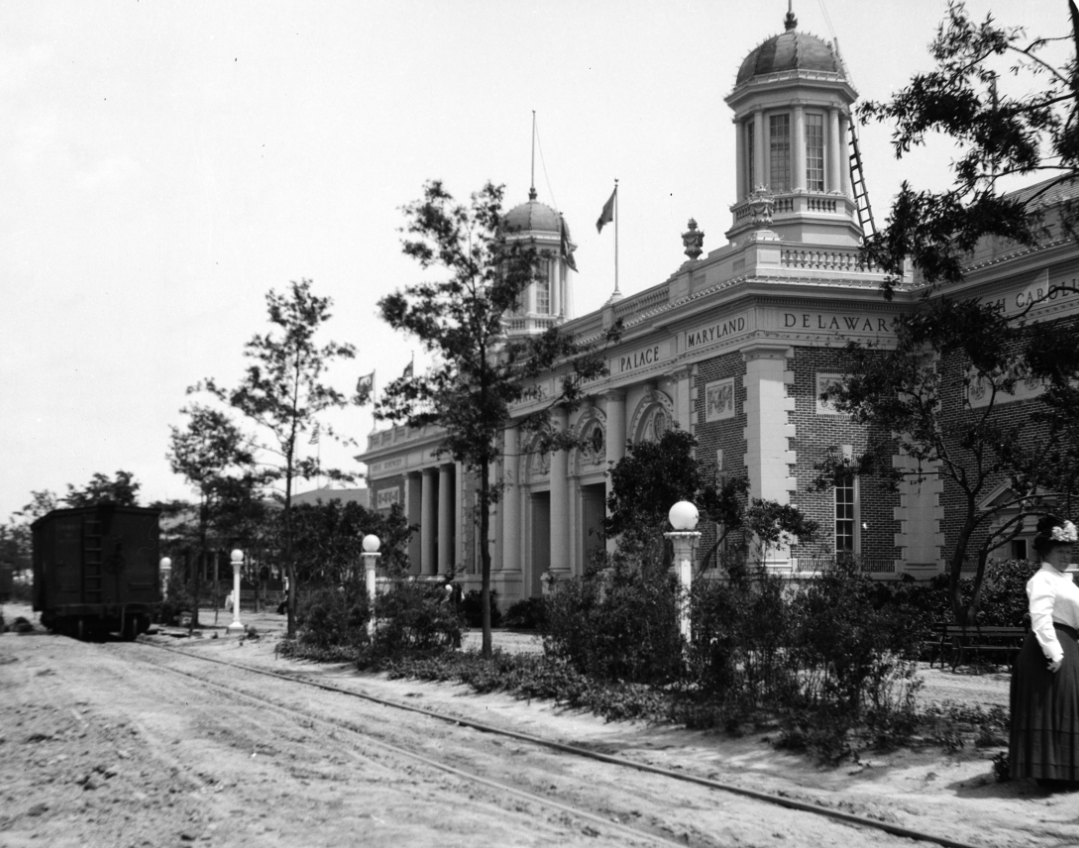
All told about 1.2 million visitors attended the Exposition. Yet by many accounts the Jamestown Ter-Centennial was a financial failure. It even reopened in 1908 once its unfinished exhibits were completed. In an effort to raise funds stock was issued in the Jamestown Exposition Company but nevertheless the exhibit closed with about $900,000 in debt.
JAMESTOWN ISLAND
Although it might have been a failure in its day, the Exposition was really just ahead of its time. In 1907 Jamestown Island and Williamsburg had not yet been refurbished into the destinations they are today. The Exposition played an important role in establishing historical tourism as one of the main commercial draws of the Hampton Roads area.
In 1993 the Daily Press ran an interesting piece of oral history about a woman named Margaret Leal Work who remembered spending the summer of 1907 with her grandfather at Jamestown.
“My father brought me there in 1907 for the Tricentennial,” Mrs. Work reports, and “my parents and I lived in a tent for the two weeks we were there. After that the Yeardley House was built, and we had family reunions there every summer until Grandpa’s death in 1915. Sometimes I stayed there all summer.”
“Grandpa Leal was the postmaster, sheriff and tour guide,” Mrs. Work recalls. “He sold postcards and a few souvenirs to tourists. People came by riverboat – the paddlewheeler Pocahontas – or by buggy or carriage from Williamsburg. Occasionally a motor car came – not more than six to 10 visitors a week. There were no accommodations for visitors on the island, or even for the work crew who built the monument and the sea wall.”
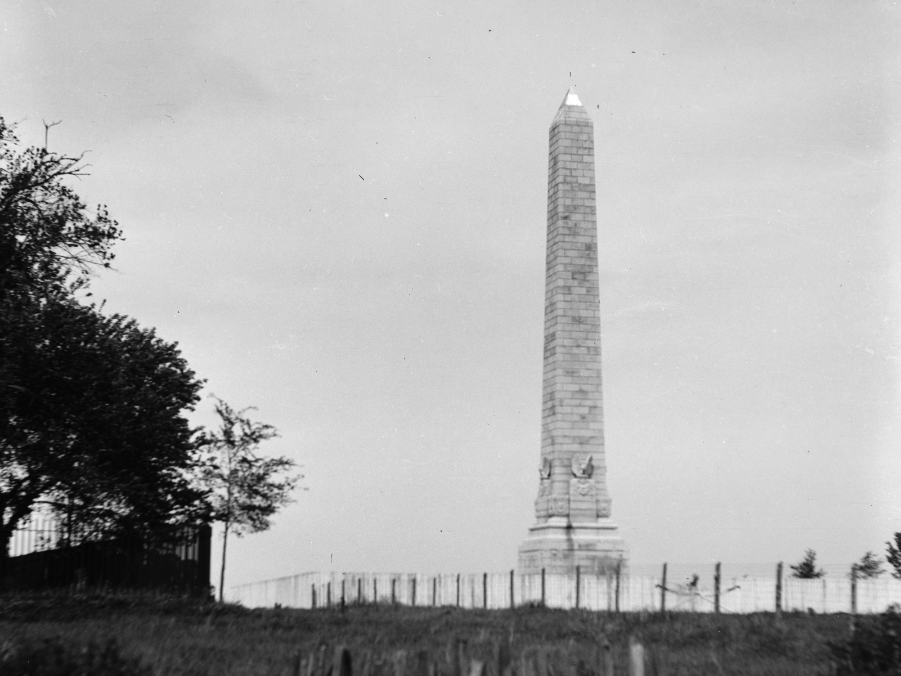
Although conditions were primitive Edward Hungerford did make that journey to Jamestown in 1907 and shot this photo of the newly erected obelisk commemorating the 300th anniversary of the settlement. Also according to the Daily Press at this location Lord Bryce, then British ambassador to the United States, gave a speech in which he declared the Jamestown Settlement, “the most important event in Anglo-Saxon history since the signing of Magna Carta.”
THE GREAT WHITE FLEET
The Jamestown Exhibition drew more than one million tourists, including such celebrities as Booker T. Washington and Mark Twain. One highlight was a visit from President Theodore Roosevelt who steamed out of the Potomac and down the Chesapeake on his yacht, the Mayflower. The Exposition served double duty for President Roosevelt because it was to be the launch point of the “Great White Fleet.”
The Great White Fleet was a goodwill mission and display of naval power that President Roosevelt intended to please America’s friends and intimidate her enemies while simultaneously testing the readiness of the U.S. Navy’s latest ships. The armada earned its nickname because the hulls of the ships were painted white and decorated with scrolling.
Due to the high quality of Hungerford’s negatives and the hard work of The Mariners’ Museum photography department, we can zoom in and pick out three examples of the Great White Fleet at anchor.
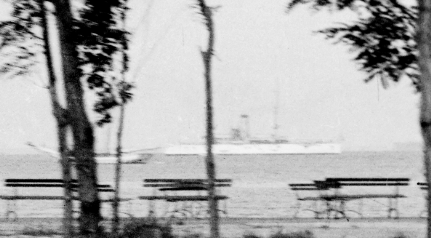
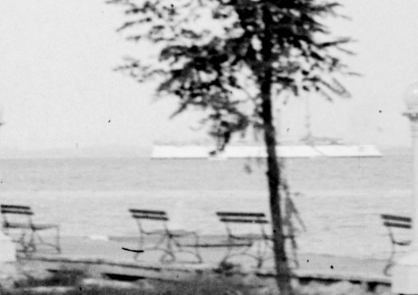
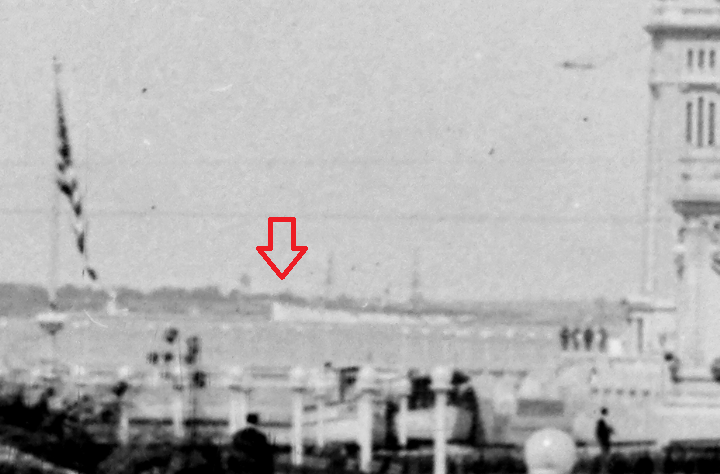
The sixteen battleships of the Great White Fleet departed from Hampton Roads after the close of the Jamestown Ter-Centennial on December 16, 1907. They would return to Norfolk on February 2, 1909, having circumnavigated the globe.
You can read more about the history of remembering Jamestown at the Library of Virginia and the Virginia Foundation for the Humanities. Our cataloging work at The Mariners’ Museum is made possible by a ‘hidden collections’ grant from the Council on Library and Information Resources.
